Description
Sweet Potato, ipomoea batatas, or ‘uala in Hawaiian. Call it what you desire, is an incredible vegetable. The tubers are delicious and nutritious, but also the leaves are high in protein and the top 3-4 inches of the shoot tips and leaves are edible too! Not only are most parts of this plant edible but its an excellent sprawling ground cover, and thrives in our climate. Wow, what a plant! And there are tons of varieties!
Propagation
You can plant sweet potatoes from the tubers themselves, or for much quicker production plant cuttings. From cuttings you can have potatoes in 4 months. If you can grow all your own potatoes then you are well on your way for a year worth of starches, the bulk of our diets! Sweet potatoes thrive in full sun or full shade. They seem to take off quicker in the shade, where there is also less weed competition, but grow well either way.
Planting tubers; wait for them to sprout in your kitchen or somewhere else free of pests. Then go stick them in the ground and wait. The tubers are most likely to sprout in spring and summer, but may anytime. Plant with the sprouts skyward, and bury just below the surface. You may plant in soil or mulch.
Planting cuttings is equally as easy. Go grab some leaves and follow the stem and pull it out of the ground, be careful not to remove stems with large roots as those likely have potatoes attached. If possible get cuttings with smaller roots, as they will root much quicker, but stems without roots will also thrive. Now that you have your cutting place them around where you want sweet potatoes to grow. Cover lightly with mulch or soil and wait.
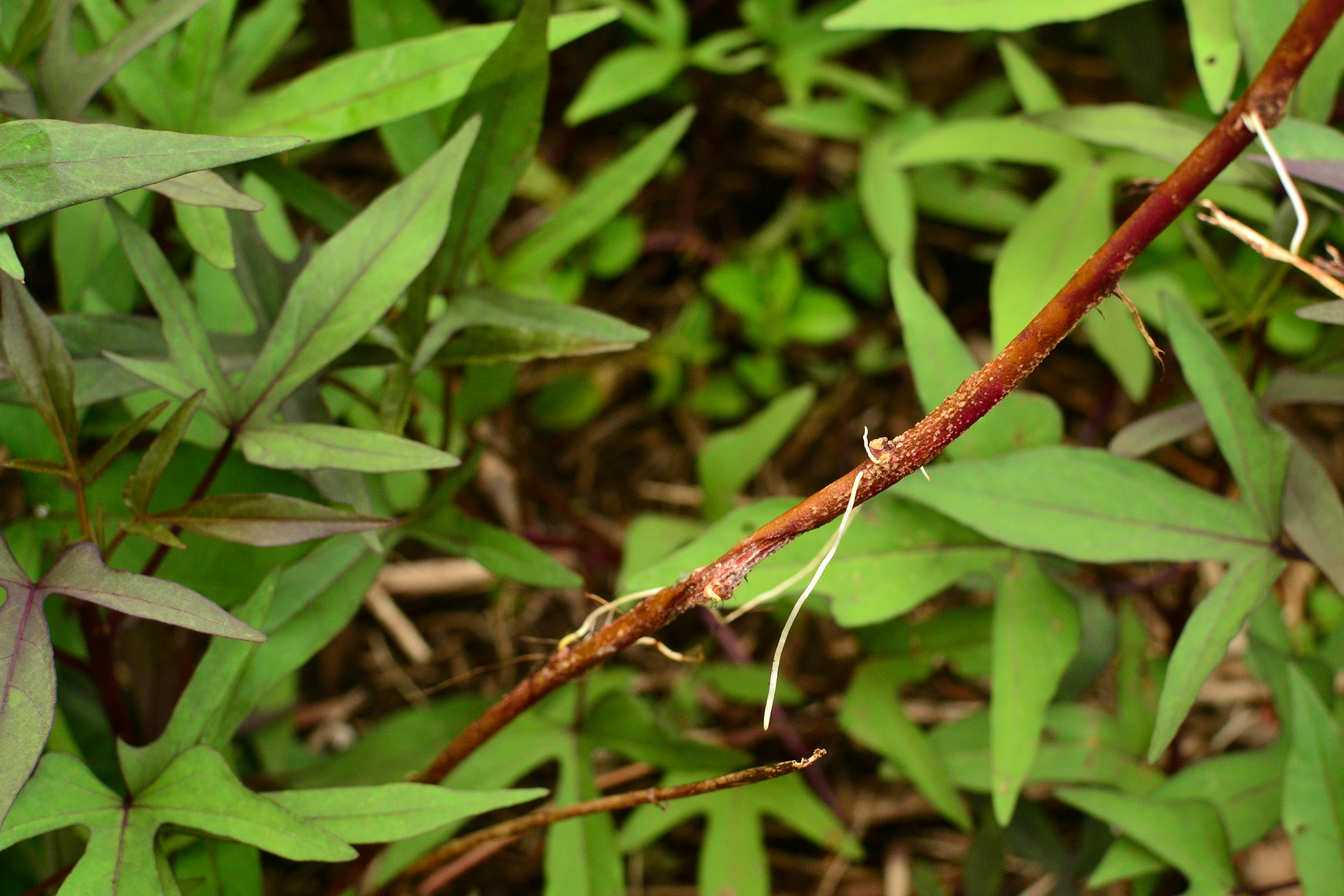
Find stems with roots
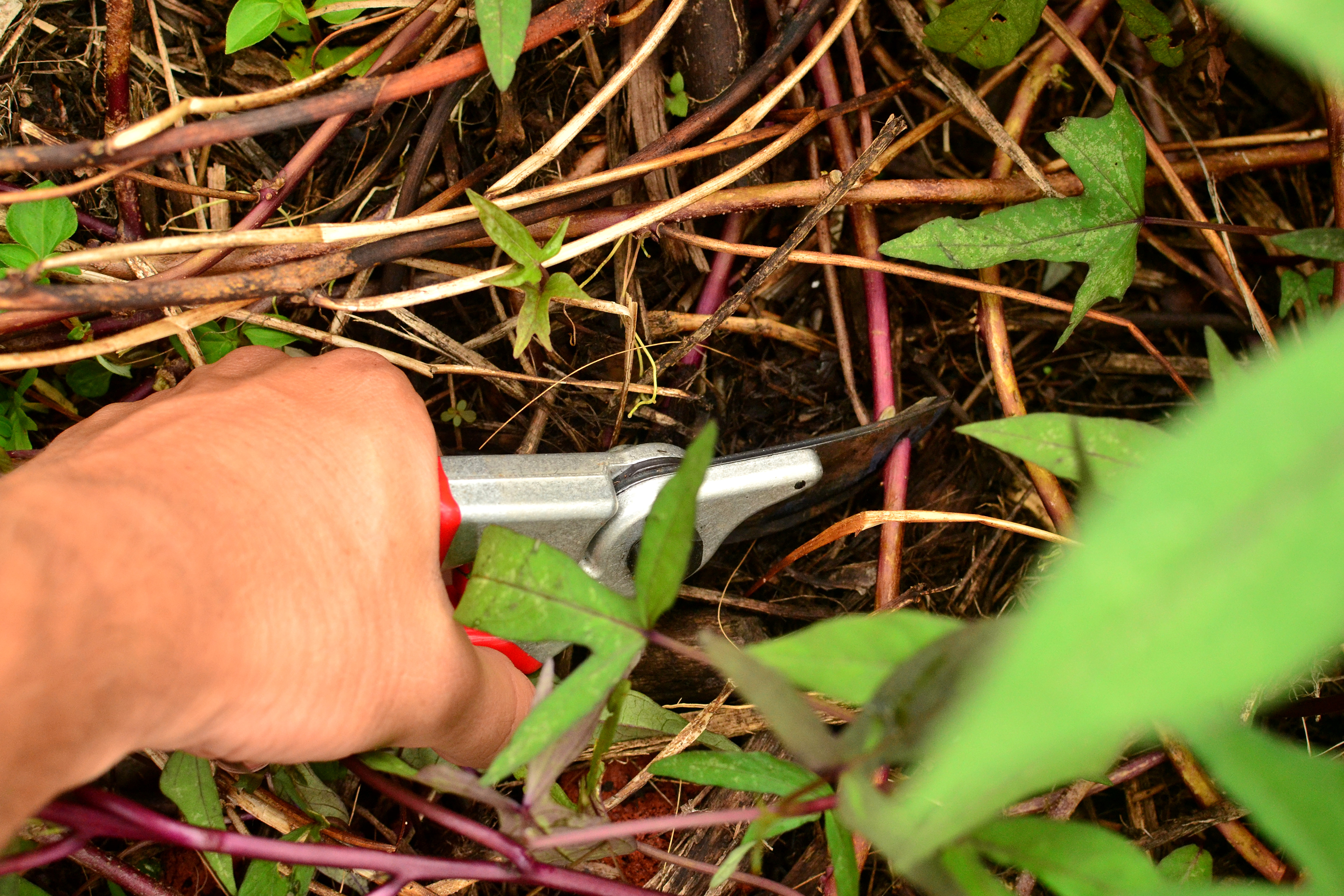
Cut from plant
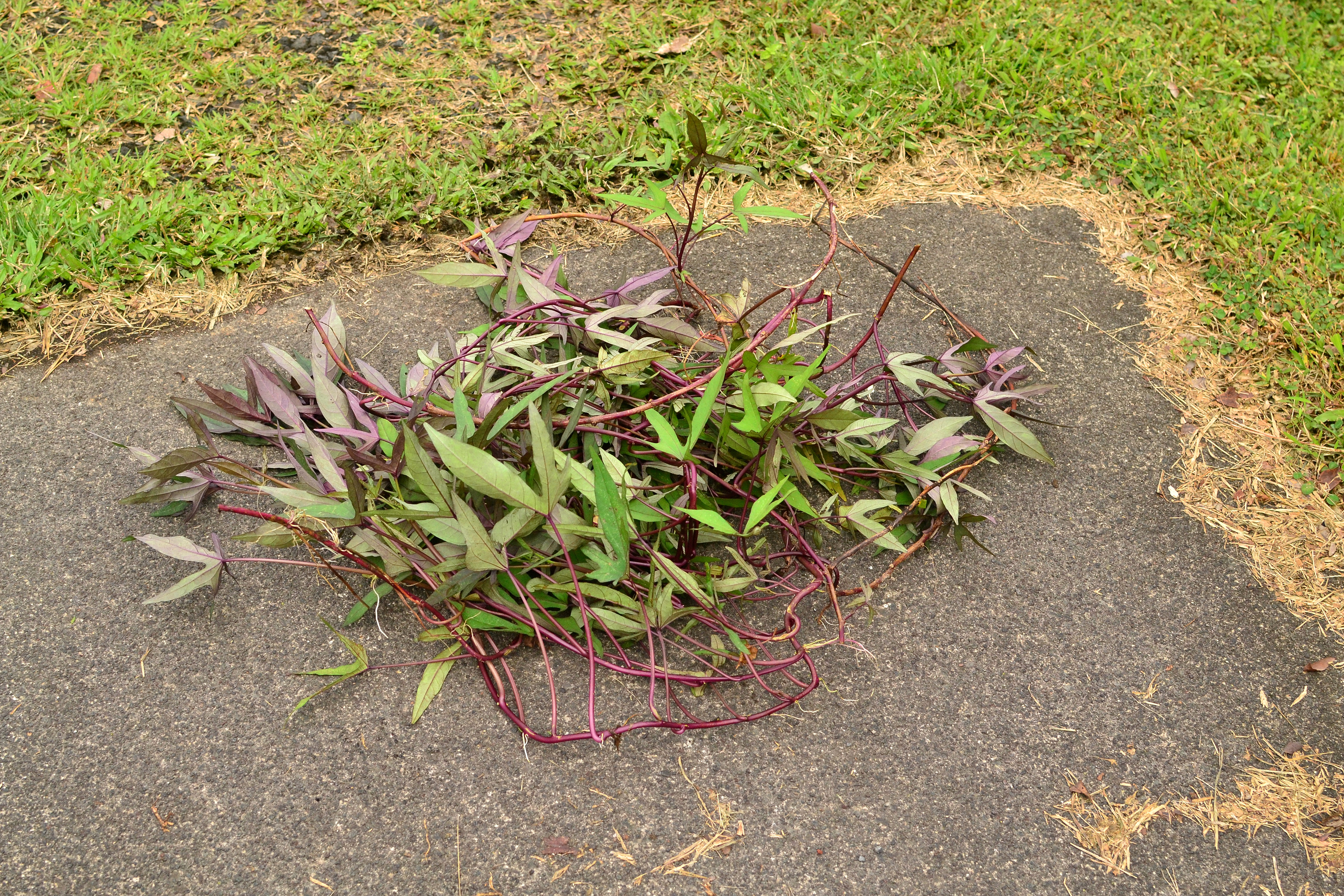
Cuttings
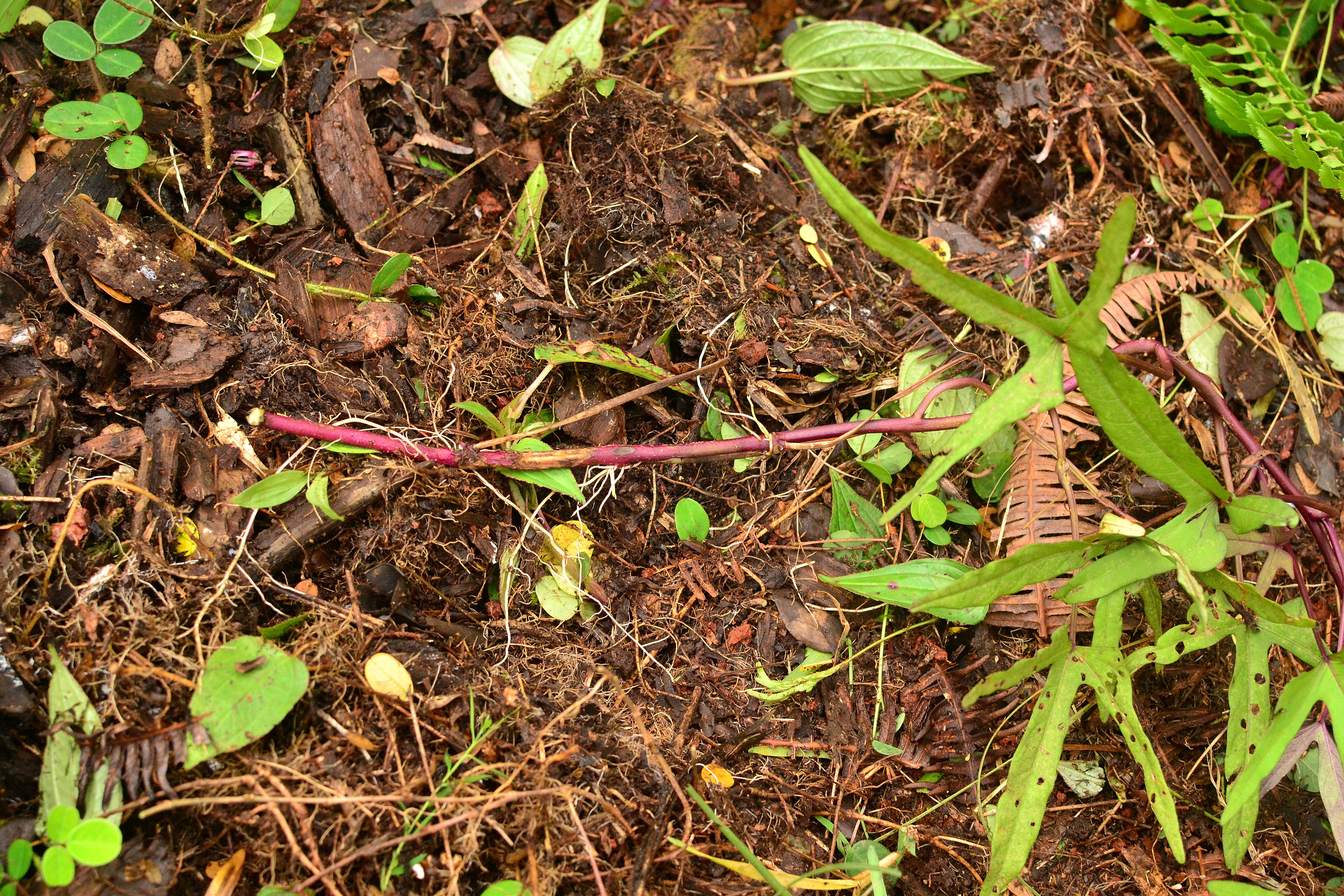
Place on ground
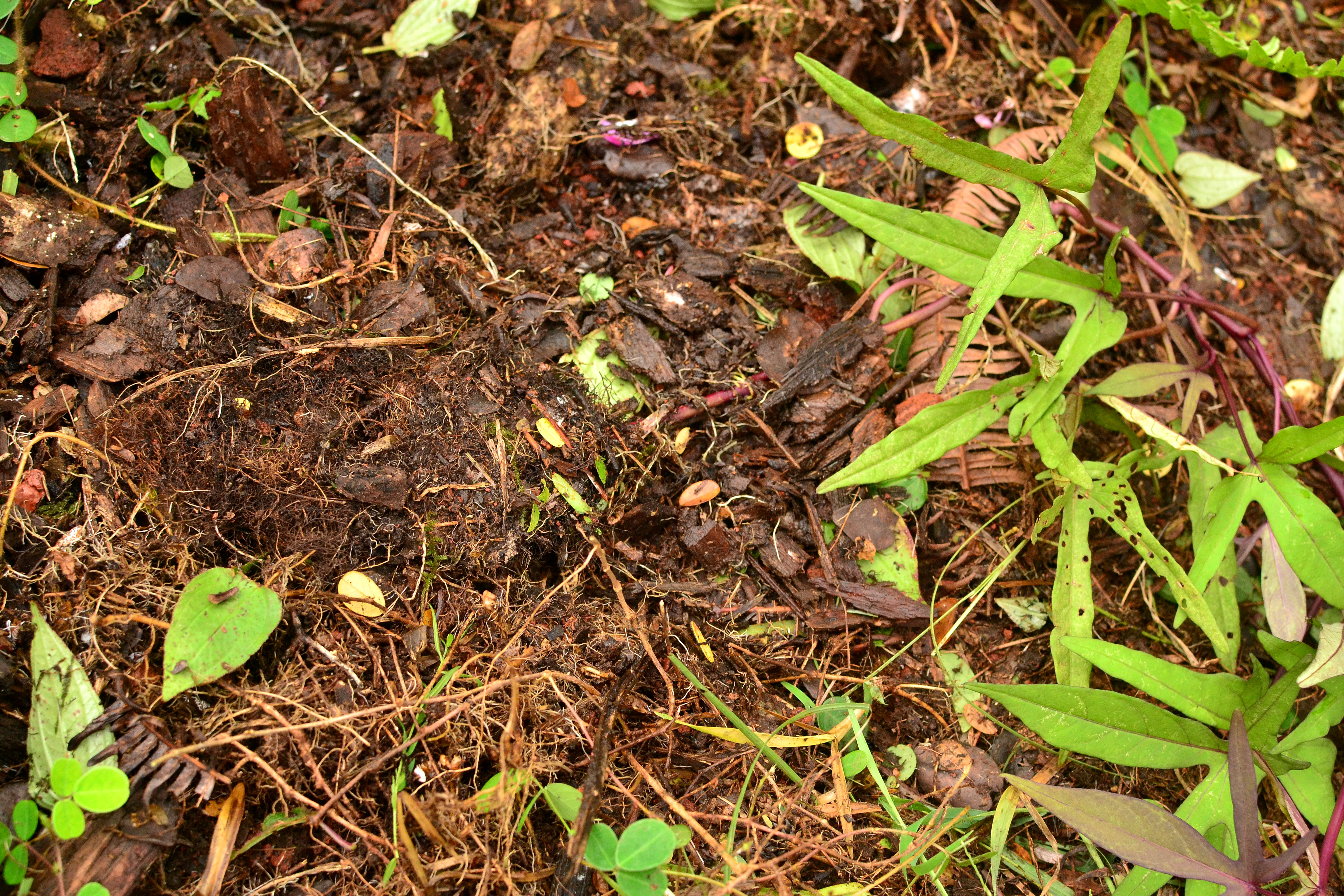
Cover roots with mulch
Tip: Planting in the evening before the rains start will shock the plants the least. However, the plants are extremely hardy, I’ve left them out in the sun all day and planted them and they still grew. But they do need water, and as much as possible! If you do not get rains almost every night like I do, water them in well once you plant them.
Care
Make sure you stay on top of weeding during the first few weeks after transplanting. They will grow and cover all the space they can. However, if they do not get a good head start they may be covered up by another plant and may be choked out. After they are established a light weeding every once in a while may be necessary, especially if honohono grass creeps in!
When the plant gets out of control, and it will, hill it like normal potatoes. That is, push the plant back on top of itself; this will start the plant to put its effort into growing tubers rather than just sprawling everywhere. A good time to do this is once it has covered the area you want it to grow in, maybe it outgrew its bed and is pushing into the path, what a great time to hill it. Just simply take all the stems and flip it from the path back into the bed. I’ve heard mixed reviews of putting more mulch or soil on top of the plants once you’ve hilled them, so why not try multiple methods and see what works best for yourself. If you are going to cover with mulch or soil, they say to cover all but a few inches of the tops of the stems and leaves. Try for yourself and let me know what works best!
I do not always try to grow sweet potatoes for tubers, but for the simple fact that they grow super fast, cover the ground, suppress weeds and are a quick edible leafy green. I have heard that too much nitrogen makes the plant focus on leafy growth and sprawling. Perfect for a ground cover! I have planted some sweet potatoes under an ice cream bean tree, inga edulis, a nitrogen fixing fruit tree, and it has produced an impenetrable ground cover where only native ferns and planted taro has sprouted under, perfect!

Eating
Cook tubers just like any other potato; boiled, mashed, baked, hash browns, roasted, fried or get creative! You may use the leaves raw or cooked, I like them in sandwiches or tacos, or cooked like spinach. If you’re going to use the shoot tips you must cook them for at least 20-30 minutes and must not be eaten raw.
It is very hard to store tubers in our humid climate. The solution: harvest potatoes as needed! If you leave them in the ground they will not rot away and you don’t have to worry about storage. And if you forget about them, they just continue to grow. So just harvest a few when you want to eat them.
Where to obtain planting materials
Ask anyone you know growing sweet potatoes, I’m sure they will give you as many cuttings as you need. Or buy tubers from the farmers market, try to buy from a vendor that actually grows the potatoes themselves as they will be suited to your environment and hopefully grown without pesticides.
I have sweet potatoes growing in many different parts of the yard, but I have never bought starts, and only planted tubers I couldn’t eat quickly enough and they sprouted. So you can find them free easily. Maybe they are already growing in your yard and you don’t even know it! That happened to me when I moved in.
My Garden
I am growing at least four kinds and I only know what two of them look like, one is Okinawan, white/cream outside and purple on the inside, and the other is fully purple. The other two I only know from the leaves.
Before and after photos of my planting today. Pushing back the weeds to clear out space for ground cover. If you don’t stay on top of your weeds they will take over like happened here. I rediscovered some sweet potato, coconut, native hibiscus and ti that I planted months ago and neglected.
I always let the ferns and other native plants grow when I’m clearing areas. I may prune or cut back some ferns, especially uluhe, Dicranopteris linearis, when they are too big and intrusive. But the natives are beautiful and have their place in the garden, hey, they were there before I was anyway!
- Before
- After
- Before
- After
Full of sweet potato cuttings now!
Happy gardening!










